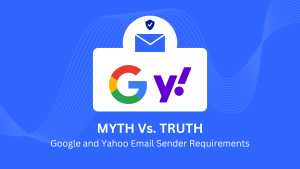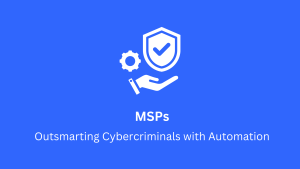Microsoft’s New Email Sender Requirements: What You Need to Know

Microsoft has announced an important update for businesses using Microsoft Outlook. Starting May 5, 2025, a series of changes will take effect that could significantly impact your email practices, security protocols, and productivity. As part of its ongoing efforts to improve user experience, security, and performance, these updates aim to streamline business communications and enhance protection against modern email threats.
In this blog, we’ll break down what you need to know about the new Microsoft Outlook changes, how they affect your organization, and the steps you can take to stay ahead.
New Outlook Email Authentication Requirements
Domains sending more than 5,000 emails per day must comply with Microsoft’s upcoming email authentication update for Outlook by May 2025. This means that organizations must implement the following:
1. DMARC (Domain-based Message Authentication, Reporting and Conformance)
- DMARC ensures domain alignment, helping in phishing and spoofing prevention.
- Outlook DMARC must be implemented, aligning with either SPF or DKIM or both.
- DMARC must be configured with at least a p=none policy.
2. SPF (Sender Policy Framework)
- SPF verifies that the sending server is authorized to send on behalf of your domain, reducing the risk of spoofing and increasing email delivery.
- Outlook requires SPF to be implemented and properly configured for your domain.
3. DKIM (DomainKeys Identified Mail)
- DKIM helps ensure that emails remain unaltered during transit, protecting messages from tampering.
- For high-volume senders, DKIM must pass to verify the authenticity and integrity of the communication.
Do Outlook Changes Only Affect High-Volume Senders?
Although Outlook will soon enforce its email authentication requirements on high-volume senders, it highly recommends SPF, DKIM, and DMARC deployment as a best practice for all senders to reduce spam and spoofing.
Additional Requirements
In addition to the above-mentioned set of new email authentication requirements for bulk senders, Outlook also requires that the From and/or Reply-To addresses be valid and capable of receiving replies. Additionally, all emails must include functional unsubscribe links, allowing recipients to easily opt out of future communications.
To maintain email deliverability and compliance, businesses must follow transparent mailing practices. This includes obtaining explicit consent, avoiding deceptive tactics, using proper list hygiene, and efficiently handling bounce processing.
Following these best practices helps improve email authentication, enhances sender reputation, and ensures compliance with Microsoft Outlook’s email policies.
Microsoft Outlook DMARC Compliance Timeline
- Immediate Action Required: Starting April 2, 2025, Microsoft strongly encourages all senders—particularly those sending more than 5,000 emails per day—to audit and update their SPF, DKIM, and DMARC records. Taking prompt action will significantly reduce the risk of non-compliance ahead of the upcoming enforcement deadline.
- Enforcement Begins – May 5, 2025: Outlook will start routing non-compliant emails to recipients’ Junk folders.
- Future Enforcement – Full Rejection (Date TBA): Microsoft has also announced that, at a later date (to be determined), emails from high-volume senders that remain non-compliant will be fully rejected to better protect Outlook users from spam and fraud.
You can use our free domain checker tool to get a comprehensive overview of your email authentication posture. If you haven’t implemented DMARC, SPF, and DKIM, now is the time to set these up. These measures are crucial to avoid potential email delivery issues after the changes are implemented.
How Skysnag Can Help You Meet these New Requirements
Skysnag automates DMARC, SPF, and DKIM implementation to ensure your domain aligns with Microsoft’s new requirements without the complexity or risk of misconfiguration. With real-time visibility, error detection, easy-to-follow recommendations, and dedicated expert support, Skysnag helps organizations:
- Achieve full domain alignment with DMARC using SPF and DKIM
- Enforce DMARC at its strictest policy level with p=reject
- Monitor and analyze authentication failures with actionable reporting
- Strengthen email security and privacy with TLS encryption and MTA-STS enforcement
- Prevent spoofing, phishing, and email delivery issues before they impact your business
Whether you’re managing one domain or thousands, Skysnag ensures your email infrastructure stays secure, compliant, and future-ready—with zero manual overhead.
Sign up and achieve compliance before the deadline




